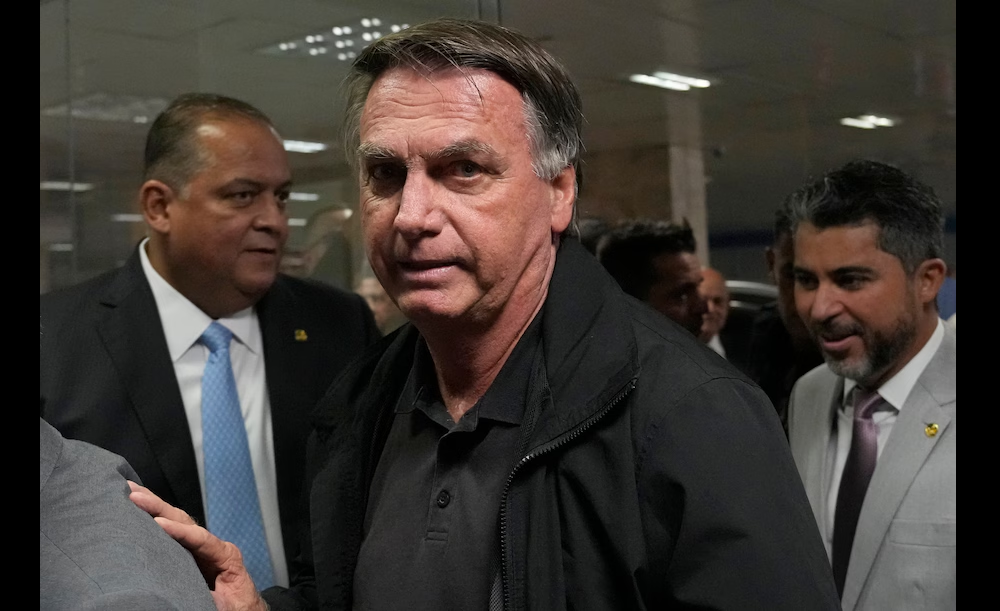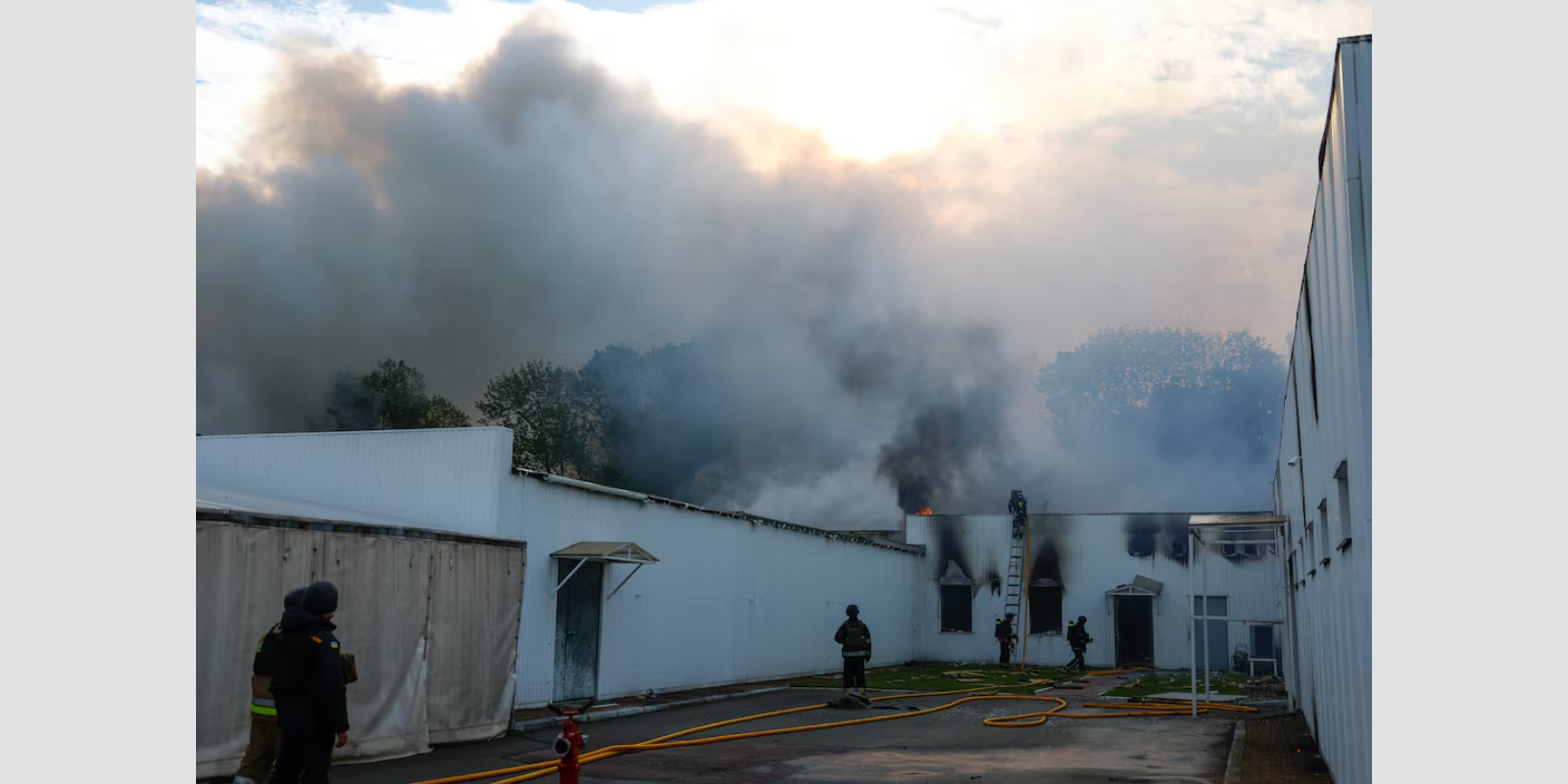What remains of Gaza?
Israel has reduced large swaths of the territory to rubble. It will take decades and tens of billions of dollars to repair the damage
Heba Saleh in Cairo FT 03-10-2025
Palestinian poet Fedaa Zeyad resisted fleeing her temporary home in Shati refugee camp in the west of Gaza City for as long as she could.
For days in early September she endured loud explosions and the ground shaking beneath her feet as Israeli forces pounded and demolished neighbouring districts in the famine-stricken city — the largest urban centre in the enclave, which was then housing up to 1mn people.
Zeyad hoped for “a miracle” so she would not be displaced yet again during the two-year war. But when the bombing reached her street she joined an exodus of hundreds of thousands of battered Gazans heading south to escape an impending advance of Israeli tanks into their city. “This time there will be no return to Gaza City,” says Zeyad, who has moved to the so far relatively undamaged town of Deir al-Balah in the centre of the strip. “If I ever go back, it will not be the same city I have known. Already much of it has been erased and obliterated.” Zeyad’s prediction is an indication of the task ahead, should the war triggered by the October 2023 Hamas attack on southern Israel come to an end. Over two years of relentless bombardment and repeated ground incursions, Israel’s offensive has pulverised the Gaza Strip, reducing huge swaths of it to rubble and wrecking its agricultural land and food systems.
Last week, the US put forward a ceasefire and postwar plan that is backed by Israel and Arab states. It is conditioned on the disarming of Hamas militants and envisions that control of the territory would pass to a supervisory body, dubbed the “board of peace” that will oversee a Palestinian committee administering day-to-day affairs. Hamas, which has ruled Gaza since 2007, is yet to formally respond to the proposal.
But even if the plan is adopted and a ceasefire holds, it could cost billions of dollars and take many years to clear some 54mn tonnes of concrete debris and rebuild Gaza’s vital infrastructure and battered cities, according to UN estimates.

Much of Gaza’s 2.1mn population have been crowded in tents in camps where there are no public services such as running water or proper sanitation © Hamza Z H Qraiqea/Anadolu/Getty Images
A senior aid official who closely monitors the destruction says that last year there had been hope of using “an incremental model” to fix and upgrade existing neighbourhoods and facilities. But the extent of the damage in the months since now demands a ground-up approach.
The US-backed Gaza plan, which includes a phased Israeli withdrawal with no firm timeline, would also leave Israel in control of a buffer zone inside the perimeter of the enclave. “There are serious problems in the proposal,” says Amjad Shawa, director of the Palestinian Non-Governmental Organisations Network. “But we Palestinians cling to any chink of hope. The priority is to stop the killing.”
Though the US plan states explicitly that there will be no forced displacement, many Gazans are fearful that the devastation is a prelude to expelling them from the enclave or forcing them into what Israeli officials call “voluntary emigration” because their homeland has been rendered uninhabitable.
“I feel we are being uprooted, not just [temporarily] displaced,” says Shawa. “This total ravaging of the land is aimed at breaking our connection with it, so they can plant the idea that there is nothing to come back to.”
The toll from the war on Gazan society can be understood not only in terms of the numbers of those killed, injured or displaced but is also reflected in the decimation of vital infrastructure and resources that underpinned life on the strip.
The latest UN assessment, based on satellite imagery published on August 6, shows that 78 per cent of buildings in the Gaza Strip have been damaged and more than half of them completely destroyed.
Almost all cropland has undergone some level of destruction and will need rehabilitation to become productive again. Large tracts of farming land have also become inaccessible because they are located in no-go military zones controlled by Israel.

The aftermath of an air strike in Gaza in August. Hardly a corner of the strip has been spared the ferocious bombardment of Israel’s armed forces © Abir Sultan/EPA
A majority of schools have been either destroyed or severely damaged and not a single university has been left standing. Students have lost a second year of education and no one knows how or when learning could resume.
In addition to the destruction, more than 80 per cent of the territory of the Gaza Strip has been subsumed into Israeli military exclusion zones, or is covered by forced displacement orders. Of that area, half is estimated to have been completely destroyed, aid officials say.
Much of the 2.1mn population have been crowded in tents in parts of central Gaza or in the southern Mawasi coastal strip where there are no public services such as running water or proper sanitation.
In February, the World Bank estimated it would cost around $53bn in recovery and reconstruction for damage inflicted during the first year of war up to October 2024. It has yet to update its estimate, but since then hardly a corner of the strip has been spared the ferocious bombardment of Israel’s armed forces.
“Everything has been lost and very little remains,” says PNGO’s Shawa. “The damage this time is unlike in any previous wars in Gaza. The place needs to be rebuilt from scratch.”
The trauma and loss of life, frequent forced displacement of exhausted people along with restrictions on the entry of aid have fuelled a humanitarian catastrophe. Famine has taken hold in Gaza City and its surrounding area, a UN-backed hunger monitor declared in August, and is likely to spread to other parts of the enclave.
A UN-appointed panel and human rights groups have accused Israel of committing genocide in Gaza, allegations rejected by Israeli leaders who insist they are conducting a necessary war against terrorism. Israel says it is rooting out infrastructure used by Hamas to conceal tunnels, launch attacks on Israeli troops and hide weapons. It has repeatedly denied that it is demolishing entire Palestinian towns and neighbourhoods in order to prevent civilians from being able to return after hostilities cease.
Benjamin Netanyahu, the prime minister, said at the UN last week that Israel had been “wiping out the Hamas terror regime” across Gaza and dealing with “hundreds of miles of terror tunnels underground, and countless terror towers above ground”.
Israel’s onslaught has killed more than 66,000 Palestinians, according to local health authorities. The October 2023 Hamas-led attacks on southern Israel killed 1,200 people, according to the government. Hamas also took 250 people hostage and still holds 48 captives, only 20 of whom are believed to be alive.
In Gaza City, as elsewhere in the strip, entire residential blocks have been levelled, bombed, bulldozed or blown up by remote-controlled explosive-laden armoured vehicles. The systematic demolitions started on the eastern and southern flanks of the city months before Israel ordered a full evacuation of residents on September 9 and, a week later, launched its ground offensive.
If a ceasefire does not come through and the full evacuation goes ahead, Gaza City is likely to be “completely destroyed”, the aid official says, pointing to what has happened in the past.
According to the UN assessments of satellite imagery 78% of buildings in the Gaza Strip have been damaged. More than half have been completely destroyed. 98.5% of cropland has undergone some level of destruction and will need rehabilitation to become productive. 90% of schools have either been destroyed or severely damaged and not a single university has been left standing.
On Wednesday, Israel Katz, the defence minister, said Israel was tightening its encirclement of Gaza City and has ordered all remaining residents to leave. Those who refuse will be treated as “terrorists and supporters of terror”, he warned.
Demolitions have been used in various parts of the strip to raze buildings and clear land of all construction. An Israeli reservist who served in Gaza and gave testimony to Breaking the Silence, an Israeli NGO dedicated to ending the occupation of Palestinian territories, tells the FT how a method, dubbed the “Kung Fu Panda”, was used to blow up buildings.
“It is a kind of APC [armoured personnel carrier] — no longer in military use — that has been packed with lots of explosives and an emulsion. You introduce it in a house, you detonate it and there is no house,” says the reservist. “The landscape was completely flattened — you only see ruins.”
Gomaa Salama, a teacher from Rafah governorate on the southern border with Egypt, returned to his house in January when a ceasefire was declared. He recalls a tense atmosphere, with drones surveilling the Palestinians residents and troops carrying out targeted house demolitions.
To his relief, his house was still standing. It had suffered only “superficial damage” in the preceding seven months after Israeli ground forces invaded Rafah and forced out around 1mn people.
But it was a brief respite. Israel broke the ceasefire on March 18 and ordered another forced evacuation. The army proceeded to demolish remaining structures in Rafah, and declared most of it an exclusion zone bordered in the north by the new Morag military corridor, an Israeli-controlled axis that cuts east to west across the Gaza Strip and separates Rafah from Khan Younis to its north.
Salama monitored his house via satellite images shared by a friend. “By the third month after we left it was half destroyed and a month later the entire area was obliterated,” he says. “I am bitter because this is my life’s work gone. I built it over 12 years because I could not pay for it all at once.”
Around the perimeter of Gaza, the Israeli army has demolished civilian structures in an expanded buffer zone, averaging one kilometre deep into the enclave. All construction has also been razed in at least four broad military corridors cutting up the enclave, including Morag, satellite images show.
Beit Lahia, an agricultural hub in the north bordering Israel and the Mediterranean, has also been encompassed by an exclusion zone and can no longer be accessed by Palestinians. Once known for its strawberries, citrus fruit and old Sycamore trees, it is now out of bounds for the farmers who used to work its land.
Ashraf Shafai and his four brothers farmed their family’s fields and orchards in Beit Lahia until bombardment and evacuation orders drove them out in the first month of the war. For a year, they transferred money to relatives, who had decided to stay on despite the danger, so they could buy fuel to keep the farm going. But when the brothers returned during the ceasefire, all five family homes on the land had been demolished, says Shafai. Their orchards, fields and farm equipment had all been smashed.
“The army invaded our land in October 2024 and toppled the trees,” he says. “They bulldozed our local Lahwani apple trees and the citrus planted by our grandfathers. Anything left standing withered for lack of water. We tried to repair the irrigation system but the wells were destroyed.”
Also wiped out is his brother Hani’s $8mn investment in an agricultural business on a nearby 24-acre farm from where he had planned to export strawberries to Israel. Speaking from the US where he has lived for 44 years, Hani Shafai says his dream had been to create jobs for locals.
“I finished my last phase of greenhouses about a year before the war started and I had fitted all the pumps with solar panels, but now all of it is gone,” he adds. “Not a single tree is left.”

Hani Shafai finished the last greenhouses in an $8mn agricultural investment in Gaza a year before the war started. He says nothing has been left standing

Palestinian farmers inspect greenhouses and olive trees destroyed in an Israeli air strike in Rafah in the southern Gaza Strip last January © AFP/Getty Images
The UN Food and Agriculture Organization published a satellite imagery assessment in August, which it says reveals the “staggering reality” that as famine looms in Gaza 98.5 per cent of cropland is either damaged, inaccessible or both.
Of 15,000 hectares of cropland in Gaza before the war, only 232 hectares are still available for cultivation, says the FAO. In addition, some 83 per cent of irrigation wells have been damaged and livestock numbers have been decimated.
The destruction of agricultural land, says Neil Marsland, FAO senior technical officer, is not just the result of crops being burnt and trees uprooted, but also an outcome of bombing and contamination from damaged sanitation infrastructure.
Tanks and heavy weapon movements have degraded the soil in some places rendering agricultural production impossible, he adds.
The UN has estimated that for every square metre in Gaza there is on average 383kg of debris.
“That the conflict has contaminated the soil and the water table is beyond doubt,” says Marsland. “However, before any soil and water rehabilitation can take place, debris has to be removed.”
The Shafai family's property has been destroyed over the course of the war
Although many Gazans relied on food aid even before the war, almost 15 per cent of the calories consumed came from domestic production, mainly protein from livestock, poultry and dairy, says Marsland. Now only 1.4 per cent of poultry has survived, 3.8 per cent of cattle and 26 per cent of sheep.
“Agriculture was not just important for food, it was also important for livelihoods,” he explains. “People were earning incomes.” FAO estimates that before the war a quarter of Gazans derived full or partial livelihoods from agriculture and fishing. In February, the agency estimated the recovery cost for the sector at $7.4bn, which is likely to be higher now.
“After the conflict there could be some gradual re-establishment of agriculture over the next decade, but large scale, safe cultivation and a full recovery could take several decades,” says Marsland.
Hajj Abu Hani, a farmer from Qarara, a small town north of Khan Younis, has also lost his land to an exclusion zone. Displaced five times during the war, he now lives in a tent in Deir al-Balah. His land, which used to support an extended family of 48 people, has been impossible to reach since the ceasefire ended in March.
“I had olive trees, 17 sheep and two cows, but now there is nothing,” says Abu Hani. “Some of the animals were killed in the bombing and others died from hunger and thirst after we left. The house has been demolished and the land bulldozed.”
Palestinians in Gaza are not just living in perpetual trauma, hunger and the destruction of their society, but their future existence in their shattered homeland remains uncertain.
Israel’s extreme far-right government embraced a controversial plan first announced by Trump in February calling for the mass ejection of the population to Egypt and Jordan and a redevelopment of the strip as the Riviera of the Middle East.
Trump has since walked back his outlandish proposal, however. His most recent ceasefire proposal explicitly rules out Israeli occupation or annexation. The plan also has provisions for economic development and reconstruction. But all timelines are vague, including if and when Israeli forces will withdraw from the enclave. Israel would still retain its perimeter buffer zone around the Gaza Strip.

A Palestinian tries to grow vegetables amid the ruins of Jabalia in Gaza. Israel’s offensive has destroyed huge swaths of agricultural land and domestic food production © Mahmoud Issa/Anadolu/Getty Images
Before the announcement of the Trump plan, Netanyahu spoke frequently of the “voluntary emigration” of the Palestinians and has lambasted Egypt in recent weeks for depriving Gazans of the “human right” to flee a war zone.
Two weeks ago, Bezalel Smotrich, the far-right finance minister who has lashed out at Nentanyahu for agreeing to the ceasefire deal, touted Gaza as a potential “real estate bonanza” that could be shared with the US.
Netanyahu has also vowed that Israel will “finish the job” in Gaza if Hamas does not agree to the US-led deal.
With so much destruction and uncertainty, thinking of the future is confusing and dispiriting for young Palestinians.
“We just need to forget the future for now because all avenues appear blocked,” says Shahd Ghassan, a fifth-year dentistry student.
She has been struggling for two years with poor internet connections to attend online lectures offered by her university, but these only cover theoretical subjects, not the practical courses she would need to become a dentist.
“In a normal situation I would be graduating this year,” she says. “What I very much want now is a chance to leave Gaza with my family and escape this genocide.”
Cartography by Aditi Bhandari. Additional reporting by Quique Kierszenbaum










